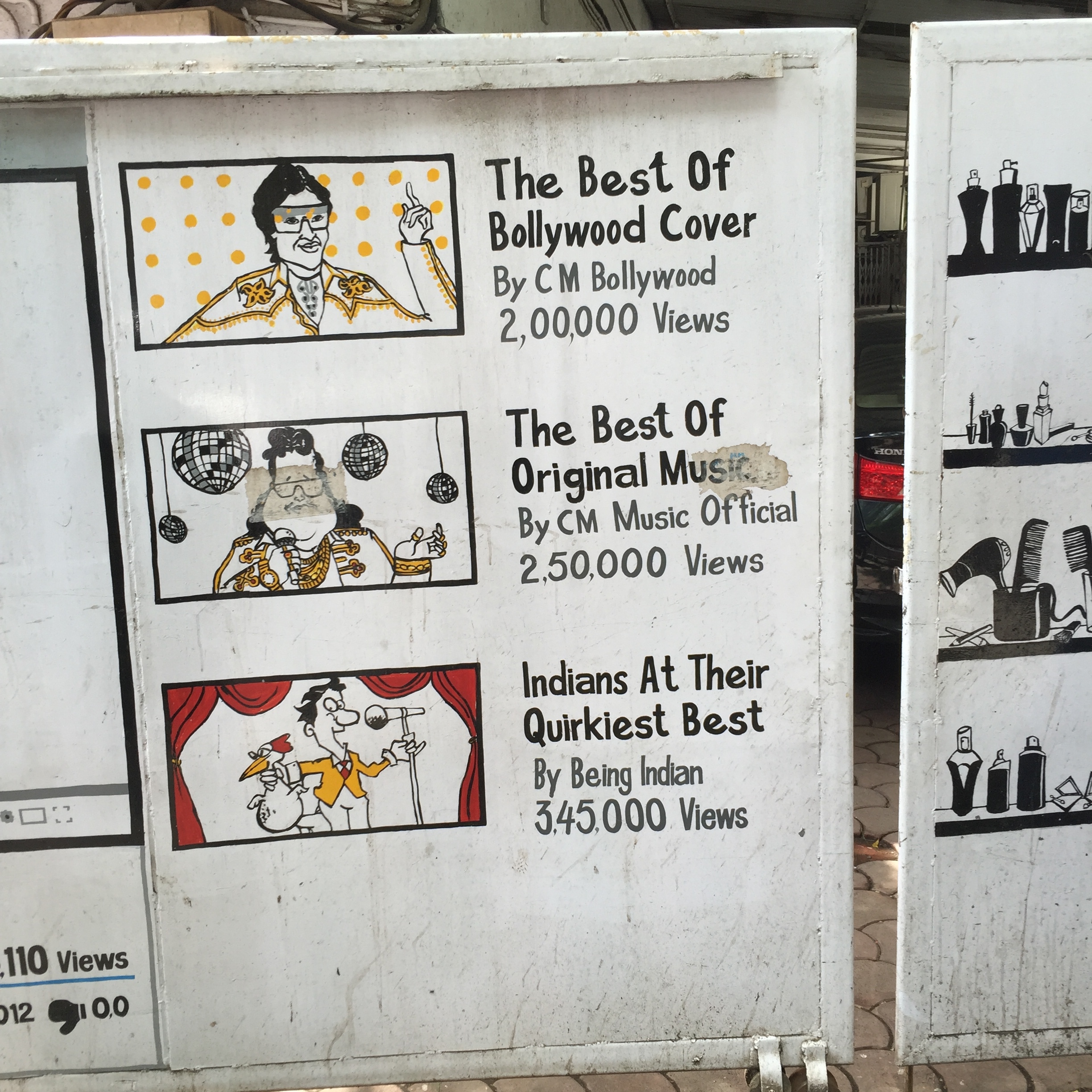What If Batman Was From Chennai? And Other Stories
/One of the strands of my research I was sharing during this trip to India focused on the various political and civic uses of the superhero amongst young American activists. You can get a taste of this work from this video produced by Fusion to showcase the ways Superman has become an icon for the DREAMer movement. This work caught the imagination of many people I met in India and so everywhere I went people were bringing me examples of Indian appropriations and remixes of superhero stories. I will be sharing many such examples in future posts.
One of my favorite examples are a series of YouTube videos, produced by a group called Culture Machine, which deal with what would happen if certain iconic cultural figures such as Batman and the Avengers, had been born in Chennai, a city in South India.
America's Bruce Wayne watched as his mother and father were brutally killed before his very eyes, and this is what made him into the Batman. But, his Indian counterpart has a much more troubling relationship with his father, whom he can never please, and more generally, with the social expectations of adult society. Everything is pulled down to Earth in this spoof video and we can debate what it means that the Indian superhero gets depicted in such an anti-heroic manner (not just here but across a range of different media incarnations). And the romance between Batman and the Catwoman takes on a life of its own, which gets developed even further in a sequel which got released more recently.
This other video shifts the focus onto the Marvel superheroes. Here, the Avengers are "heroes for hire," desperately marketing themselves for more mundane jobs, where no one expects to be invaded by aliens or over-run by super-criminals.
One did not have to look hard to spot other superheroes lurking in the heart of India's cities. My wife captured this image as we were walking through a ship-breaking yard in Mazagoan (on the outskirts of Mumbai).
We were able to visit Culture Machine's headquarters in Mumbai, where I was able to get a deeper sense of their strategies as a producer of highly spreadable media content. The following is taken from my travel diary.
Culture Machine, a new media company, set up shop in a old sari warehouse a few years ago, and has enjoyed such tremendous success that the staff now grossly overwhelms its capacity. All of the rooms are crammed with people, who feel like they are stacked on top of each other. The company is moving to a new headquarters in just a few more weeks much to everyone’s relief. We had read an article in Forbes India about our host Sameer Pitalwalla, who was identified as one of their 30 under 30 industry leaders. He is the former director of the interactive division of Disney India. He partnered with Venkat Prasad, a UCLA alum, and former Google Analytics engineer, to start Culture Machine, a company that now represents and helps to craft many of the country’s top YouTube stars.
Pitalwalla and Prasad took us through their perspective on how to design content which plays well to Youtube audiences in India. Their strategy rests on three kinds of content – Heroes, Hubs, and Hygiene. So, Heroic content would be unique and distinctive content designed to “smack you in the face” and create buzz; what we might call spreadable content which helps put a particular character or personality on the map. You can’t produce this kind of high impact content on a regular basis, so you have to develop content which keeps people coming back to the Hub on a regular basis, so this is a more serialized form of production. And finally when people come to the site, they want to find lots of content there so to fill out a channel they have an automated process which produces low impact, low cost, predictable content.
To help them develop this steady flow of content, they have developed an incredible analytics tool – probably the best big data platform for this purposes I have seen – which collects data around personalities, brands, genres, themes, etc., around the world, from both Facebook and Youtube, and allows them to predict the cycle of any given topic, so that they can rapidly produce and release content to feed rising trends, while back off from trends they see has reached its peak. They have production facilities right there, so they can transform insights into content at high speed. Here are some examples of the kinds of work which Culture Machine has been producing.
One highly successful series, Epified, involves an ongoing exploration of themes from classical Indian mythology. Here, for example, is a video which helps to explain the Polytheistic system of Hindu religion for those of us who come from a more Monotheistic background.
And here's a video which shows how the discussion of these classical stories can shed light on more contemporary debates.
The Epify videos are adopted from the work of Devdutt Pattaniak, who turns out to be a really fascinating figure. He’s billed on his book jackets as “India’s best-selling mythographer.” He started out life as a pharmacist, but he fell deep for his country’s classical traditions and began to write and talk about them more and more. He ended up styling himself as the “Chief Belief Officer” for a consulting firm: he basically works with Indian and American companies that do business in India to help them think through the rituals and mythological significance of their address to the Indian audience. At a time when the national government has embraced a particularly reactionary version of Hindu mythology, he has presented a progressive alternative, which he claims recovers the original meanings of these classical texts (debatable no doubt, but he seems pretty convinced). You can get a sense of his approach, if you are interested, from this TED talk he did some years ago.
I was able to meet with Pattaniak later in my trip. Early on, there is a certain amount of jockeying for position as he probed to see how many westerner traps I fell into and I work hard to side step them. We end up having a great discussion which ranges from Joseph Campbell to fan fiction. He was especially interested in the folkloric dimensions of fandom, a topic he had not considered before, but he got almost immediately the way fandom becomes a space for exploring multiple lives which the characters might have led. We have some debate about the ways fandom is and is not a religion and whether this might mean something different in an Indian context than it does in an American. Fair enough. He argues most American companies are especially paralyzed by religious difference while Indians live with religious contrasts all of the time. And yes, we have managed to encounter most of the world’s great religions co-existing side by side here and often working together for common survival, but we’ve also heard brutal reports of genocide directed against one or another sect here and signs that the most repressive aspects of some of these religions still exert a powerful impact on the day to day lives of people.
Here's an example of the kind of video Culture Machine produced for a corporate client, in this case, the manufacture of home appliances, which adopted a “respect for women” theme. It is a brilliant example of an advertisement which follows many of our principles for Spreadable content.
Finally, the company is very much involved in producing video segments around music and especially fashion and cosmetics. We met one of the top stars in this space, Elton Fernandez, as he was starting to shoot a segment in their studios. He said that he had gotten complaints because his videos often used models that people did not think looked like the average Indian woman, so he had invited his housemaid into the studio and was going to give her a make-over for the cameras. Here’s his YouTube channel.
We talked with the CEOs and then they brought me into the central space in the office, where all of the company’s employees, or at least those on ground for the day, gathered around for a question and answer session which centered around issues of transmedia, world-building, and spreadability. The young creative workers seemed to have an enormous awareness of U.S. based developments in popular culture and new media.
We had some discussions of what transmedia might mean in the Indian context. I had suggested that we could think about Bollywood as a system that supports transmedia performance, with musical numbers being the segment that extended outward from the film, through music videos, song tapes, lip sincs, and dance classes, all of which help to heighten awareness of a new release and build up the careers of certain performers. The Culture Machine folks talked about the elaborate traditional mythology of India – these vast interlocking story cycles that were constructed in classical times and have fueled entertainment production ever since. The stories of the Hindu gods and goddesses have been drawn into all forms of artistic production. There are full on adaptations of some of the classical epics, but individual characters can spin off and be the basis for their own more focused narratives. Both have happened in recent years in Indian television. And they compared the recent cycle to the strategies Marvel has used to launch the Avengers movies.
So, this is world-building on a large scale that spans much of the country’s history. And they noted that many more contemporary and original drama series also relied heavily on stock types and conflicts that implicitly or explicitly reference moments from those epics, so these stories still provide the template for much of their drama. But because of this rich and still strong tradition, they argued the country had been slower to develop original IP that might do what Marvel’s universe did. They were very interested in what that might look and we talked a lot about what it might mean to create such a new mythology through YouTube videos rather than big screen or television stories. A second challenge they identified had to do with the Indian consumer’s expectation of larger-than-life entertainment, whether it was these epic stories of Gods and Goddesses (the mythological genre proper) or the kinds of genre-mixing and glamour-driven stories we associate with Bollywood. They said that this expectation had created some challenges in rolling out YouTube content, since YouTube in the states is associated with a DIY “Broadcast Yourself” trend, where-as even reality television in India depends less on “ordinary people” and more on minor celebrities already partially known to audiences before they turn on the first episode.



